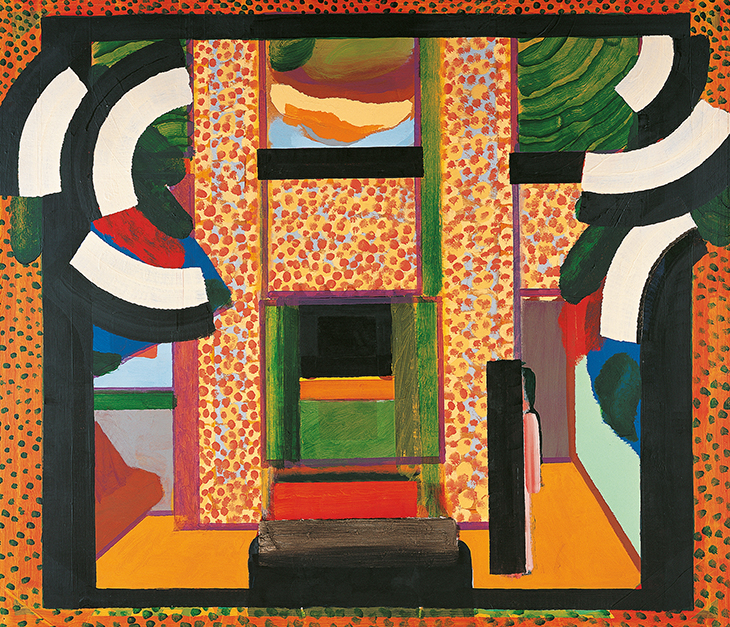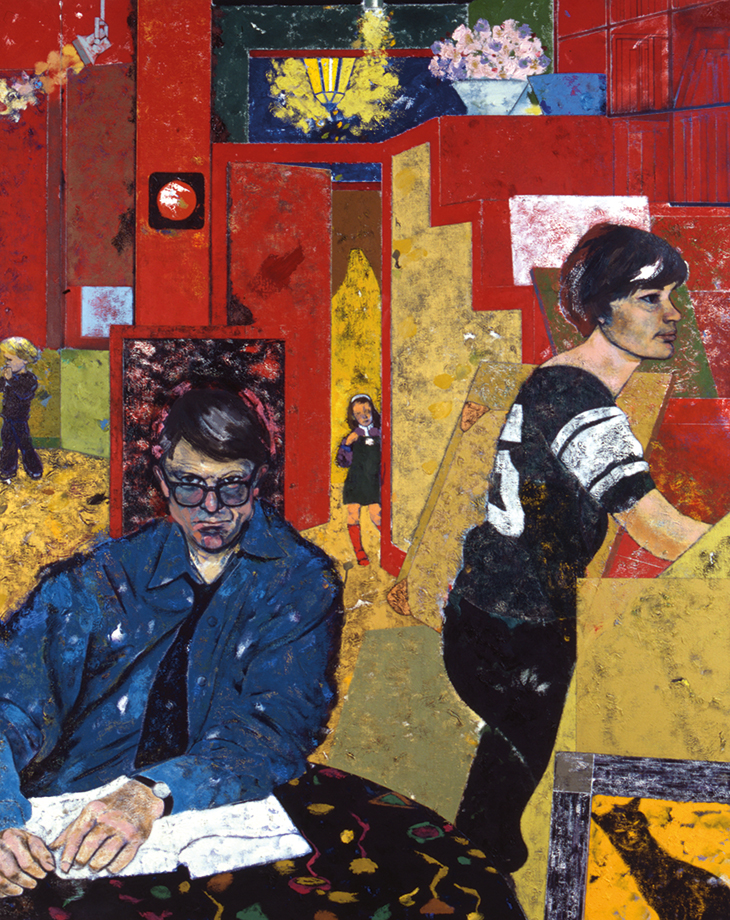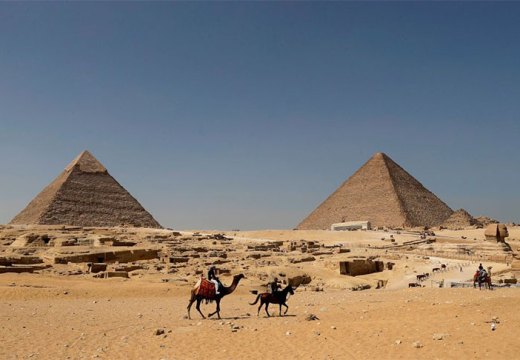175 works from the collection of MJ Long and Colin St John Wilson:
Pallant House Gallery, Chichester
Some collections really are greater than the sum of their parts. From Richard Hamilton’s Respective (1951) to Howard Hodgkin’s Grantchester Road (1975), individual works alone make the collection of 20th-century British art assembled by the architects Colin St John ‘Sandy’ Wilson (1922–2007) and MJ Long (1939–2018) one of the pre-eminent holdings of its kind. Far more than patrons, though, the couple were participants in post-war art. Their collection bears traces of friendships and collaborations with many of the leading figures of the British Pop scene, including R.B. Kitaj and Eduardo Paolozzi: it is among the most instructive records of artistic networks in Britain during the period.
Much to be welcomed, then, is the allocation through the Acceptance-in-Lieu (AiL) scheme of 175 paintings, sculptures and works on paper from the estate of MJ Long to Pallant House Gallery in Chichester. Like much of the collection itself, this decision feels like the fulfilment of a long friendship. In association with Wilson, Long and her architectural partner Rolfe Kentish designed the sympathetic extension to the museum that opened in 2006, the year in which the couple donated more than 400 works from their collection (these holdings are known as the Wilson Gift). While many of the newly acquired works have long been on loan to Pallant House, their formal accession guarantees the integrity of Long and Wilson’s collection and creates new opportunities for digitisation, conservation and display.

Grantchester Road (1975), Howard Hodgkin. Pallant House Gallery, Chichester. © Howard Hodgkin
Well represented are members of the Independent Group, not least Hamilton and Paolozzi, with whom Wilson associated in the 1950s at the ICA in London. Then comes a who’s who of British Pop from the 1960s and ’70s, with significant works by Patrick Caulfield, Peter Blake, Colin Self and others. As Simon Martin, director of Pallant House Gallery, points out, however, Long and Wilson’s collection was far more than an almanac of artists’ names: ‘in their collecting,’ he says, ‘Sandy and MJ were very interested in artists’ processes.’ That is clear from their focus on prints – including dozens of screenprints, etchings and lithographs by Kitaj – as well as in their acquisition of preparatory drawings for paintings: Caulfield’s Kellerbar (1997), for instance, is accompanied by several sketches that help us understand how the artist convened the individual components of his slick still lifes.
One reason for this fascination with process, perhaps, was Long’s professional interest in the spaces in which art was made: she designed studios for a number of artists, among them Blake, Kitaj and Frank Auerbach. This reciprocity between art and architecture is best encapsulated here in The Architects (1981), Kitaj’s great family portrait of Wilson, Long and their two children at the artist’s house in Chelsea, which Long had recently remodelled for him. But the affiliation is felt elsewhere, too: Hodgkin’s Grantchester Road depicts – or perhaps evokes – the interior of a house that Wilson had designed for himself in Cambridge; a plaster model of Paolozzi’s Newton after Blake (1993–94) speaks of the collaboration between artist and architect at Wilson’s most important building, the British Library in London.

The Architects (1981), R.B. Kitaj. Pallant House Gallery, Chichester. © Estate of R.B. Kitaj
Its biographical significance, however, is by no means the only key to this collection. As Martin points out, together with the earlier Wilson Gift, the recently accessioned works follow a figurative trail through the British art of the 20th century, beginning with Sickert and his forebears (the acquisition includes an etching by Manet), dwelling on David Bomberg and culminating with Auerbach’s Reclining Model in the Studio I (1963). Another significant strand is a group of drawings by the Scottish outsider artist Scottie Wilson, an acquisition that dovetails neatly with the longstanding attention of Pallant House to this field (Outside In, an organisation that supports artists who face barriers to the art world, was founded at the museum in 2006). This acquisition is more than a hearty supplement to the museum’s collection: it looks like a set of building blocks.
Thomas Marks is a former editor of Apollo.
The Winners | Personality of the Year | Artist of the Year | Museum Opening of the Year | Exhibition of the Year | Book of the Year | Digital Innovation of the Year | Acquisition of the Year | View the shortlists
Unlimited access from just $16 every 3 months
Subscribe to get unlimited and exclusive access to the top art stories, interviews and exhibition reviews.














![Masterpiece [Re]discovery 2022. Photo: Ben Fisher Photography, courtesy of Masterpiece London](http://www.apollo-magazine.com/wp-content/uploads/2022/07/MPL2022_4263.jpg)
It’s time for the government of London to return to its rightful home